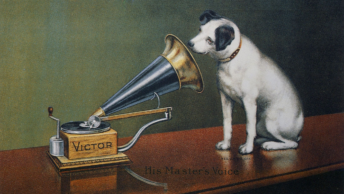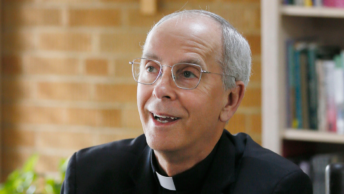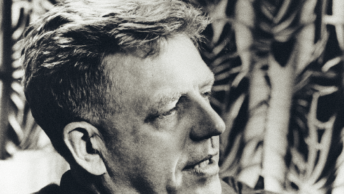Last week I wrote about the Liturgy of the Word. This week our focus will be on the Liturgy of the Eucharist. The word “eucharist” comes from the Greek word meaning “to give thanks.” We gather as an assembly to give thanks to God for all of the blessings we have received. The second part of the Mass is the Liturgy of the Eucharist. It begins with an offering and preparation. There are three major parts to the Eucharist: the preparation of the gifts and the altar, the Eucharistic prayer in which the bread and wine become the Body and Blood of Christ, and the Communion where the faithful receive the sacred elements for the salvation of their souls.
At the preparation (formerly called the Offertory), gifts of bread and wine are brought forward to be offered at the altar. In many parishes, this is the time when monetary gifts or gifts for the poor are also collected. The altar is prepared to receive the gifts. In more solemn ceremonies (such as Christmas, Easter or Pentecost), incense is used to remind us that our prayers rise up to God like the smoke of the incense rises up in the air and fills the sanctuary with its fragrance. The preparation of the gifts concludes with the Prayer over the Offerings.
The Eucharistic Prayer (13 different versions: I, II, III, IV, Va, Vb, Vc, Vd, R1, R2, C1, C2, C3) is the great prayer of thanksgiving. Each Eucharistic Prayer contains the following elements: the thanksgiving (found in the Preface the part that the priest says just prior to the Sanctus), the acclamation (the Sanctus or Holy, Holy), the epiclesis (or the invocation of the Holy Spirit) in which the priest asks God to send the Holy Spirit to sanctify/consecrate the gifts of bread and wine and make them the Body and Blood of Christ. The gesture is that of hands descending upon the gifts. The institution narrative and Consecration is the recalling of Christ’s words and actions at the Last Supper and his command to “do this in memory of me.” The anamnesis (or memorial) is the reminder that in every Eucharist we celebrate the passion, resurrection, and ascension of Christ. In other words, we make present our future by recalling the past. In the Eucharist, we ask God to give us a foretaste of our heavenly destiny. At that moment, time stands still and earth is united to heaven by the bond of the Eucharist. The oblation (or unblemished sacrificial Victim) is what the Church offers in each Eucharist. Not only is Christ offered, we are invited to offer ourselves and thereby be united with Christ so that God may be all in all. The intercessions are those prayers that remind us that every Eucharist is a joining of heaven and earth. The oblation is offered for all people, living and deceased who are called to participate in the salvation purchased by Christ. Finally, the Eucharist prayer concludes with the great doxology in which the priest glorifies the Triune God and the people respond with the great Amen.
The Communion Rite is also comprised of several parts. We recite together the Lord’s Prayer reminding us that we are united in a common bond of love. We offer a sign of peace to one another, extending the peace of Christ to those nearest us. This may take many forms: verbal, tactile (such as a hug, kiss or handshake), or non-tactile (such as a bow of the head, a smile, an extension of the hand). During the flu season, you are encouraged to use a non- tactile form of greeting while saying “peace be with you.” Following the sign of peace, the Agnus Dei (Lamb of God) is sung and the priest fractions (breaks) the host. This gesture recalls the action of Christ at the Last Supper and signifies that the many faithful are made one by receiving Communion from the one Bread of Life who is Christ. Following the Agnus Dei, the priest, deacon and faithful receive Holy Communion. In many parishes, Communion is offered under both species (the Body and Blood of Christ). It is incorrect to speak of communion in terms of “bread” and “wine” because after the Consecration the bread has become the Body of Christ and the wine has become the Blood of Christ. Terms which more aptly describe communion are “host” and “chalice” (to designate the forms under which the Eucharist is received), “Sacred Body” and “Precious Blood,” “Bread of Life” and “Chalice of Salvation.” When one receives from either species, one receives the body, blood, soul and divinity of Christ. This is known as concomitance. Therefore, it is not necessary to receive both the Sacred Body and the Precious Blood; however, receiving both is a fuller expression of the meaning of communion.
In terms of reception of the Eucharist, you may receive the host either in the hand or on the tongue. If you choose to receive from the chalice, you are to take and drink (dipping of the host into the Precious Blood, known as intinction, is not permitted for the communicant). First of all, intinction by the communicant is not sanitary. There is a danger that he or she may drop the host into the chalice or may dip the host too far into the Precious Blood and retain some of the sacred species on his or her fingertips. Second, for those members of our congregation who are celiac or gluten intolerant, their only option for receiving the Eucharist is through the reception of the cup. Introduction of the host into the chalice contaminates the Precious Blood and exposes the recipient to gluten.
As noted above, it is not necessary to receive both species in order to receive the entire Body and Blood of Christ. The host contains both the Body and the Blood and the chalice contains both the Body and the Blood. If you are suffering from a cold or flu or have flu-like symptoms, out of respect for your fellow congregants, please refrain from receiving from the chalice.
The host is intended to be consumed right away. As soon as you receive the host, you should place it on your tongue and consume it reverently, chewing on it gently. I have heard stories that people were told that if they bit into the Eucharist, they were committing sin. This is not true. You may chew the host as you would any other food, but do so respectfully. At no time should you place the host in a pocket or play with it or save it as a memento. The host is the Body of Christ and should be eaten as soon as you receive it. If you wish to take a host for someone who is ill, please approach the minister with a pyx (a metal container that looks like a pill case or watch case) and allow the minister to put the host into it. The pyx should be carried reverently in a chest pocket or worn in a pouch around one’s neck until it may be given to the one who is ill. If you do not have a pyx and would like to take Communion to someone, please see Deacon Glenn or me and one will be provided to you.
After the distribution of Communion, the liturgy of the Eucharist concludes with the Prayer after Communion in which the priest prays for the fruits of the mystery that has just been celebrated.
The concluding rites include any announcements pertaining to the well-being of the parish or parish members. The priest then prays over the people and blesses them in the name of the Trinity. The deacon dismisses the people encouraging them to live the Gospel.
If you are interested in learning more about the structure of the Mass, you are invited to read The General Instruction of the Roman Missal which details every aspect of the Mass. As you reflect and pray this week, please consider asking the Holy Spirit to enflame your heart that you may more worthily and more prayerfully participate in and really live the Mass which you celebrate. The Eucharist is God’s great gift to us so that we may grow more deeply in love with Him and with one another. May our thanksgiving lead us to greater charity and ultimately give us eternal life.








